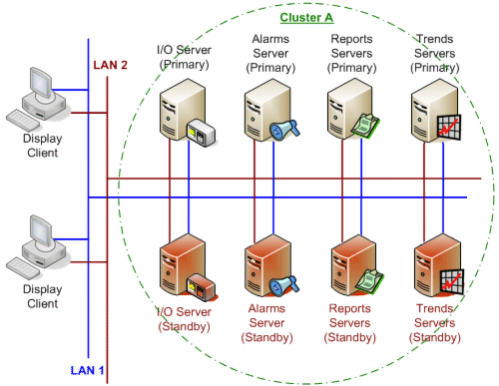
You can use the dual NIC (or multiple network interface) capabilities of each client or server, enabling you to specify a complete and unique network connection from a client to a server.
Consider the following diagram:

The above example shows two levels of redundancy:
Network Redundancy
Each of the system components in the cluster are connected to two networks (LAN 1 and LAN 2). This is achieved by using the dual end points of each server. This provides LAN redundancy as follows:
Note: For this type of redundancy to work, each system component needs to have two NICs to support two parallel LANs. On every computer, each NIC needs to use a separate IP network or subnet.
Server Redundancy
For information about server redundancy, see Reports and Trends Server Redundancy and Alarm Server Redundancy.
See Also
Published June 2018